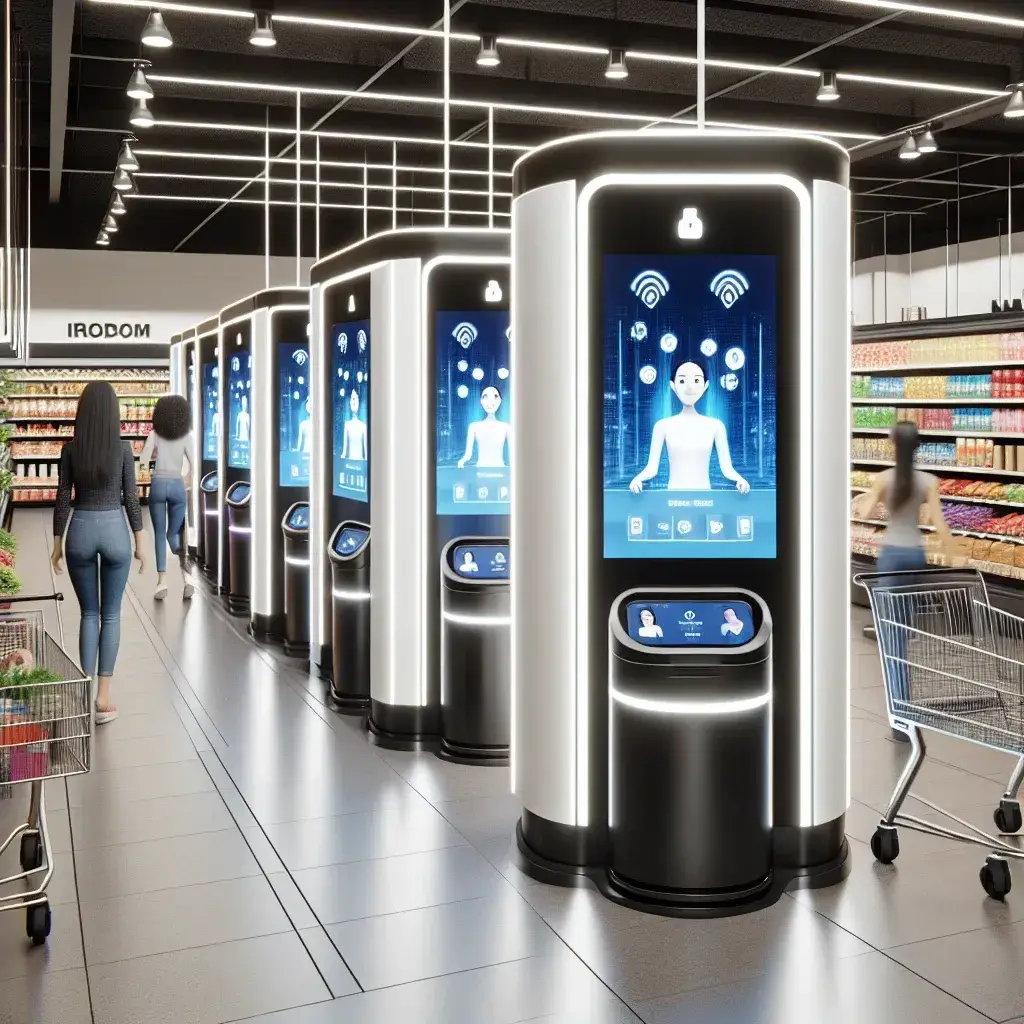Target Testing AI Powered Cashierless Kiosks in Select U.S. Regions
Introduction to AI Powered Cashierless Kiosks
In a world where technology continuously reshapes our daily lives, the retail landscape is no exception. Target, one of the leading retail giants in the United States, is currently testing AI powered cashierless kiosks in select regions. This innovative approach aims to enhance customer experience, streamline operations, and redefine how shoppers interact with products and services.
The Evolution of Retail Technology
The use of technology in retail has evolved significantly over the years. From the introduction of self-checkout machines to mobile payment systems, the shopping experience has been transformed. The rise of e-commerce has further pushed brick-and-mortar stores to adapt and innovate. In this context, cashierless kiosks represent a natural progression toward a more automated and efficient shopping experience.
Historical Context of Cashierless Technology
The concept of cashierless technology is not entirely new. Early iterations of self-service machines appeared in the late 20th century. However, it wasn’t until the advent of advanced technologies like artificial intelligence (AI) and machine learning that these concepts began to flourish. With AI’s ability to analyze data in real-time, retailers can gain insights into consumer behavior, inventory management, and operational efficiency.
Target’s Initiative: A Step Towards Innovation
Target’s decision to pilot AI powered cashierless kiosks is a strategic move to stay ahead in a competitive market. By implementing these kiosks in select U.S. regions, the company is not only testing the technology but also gathering valuable data on customer preferences and shopping habits.
Objectives of the Pilot Program
- Enhancing Customer Experience: The primary goal of these kiosks is to provide shoppers with a seamless and efficient checkout process, reducing wait times and enhancing overall satisfaction.
- Data-Driven Insights: By monitoring how customers interact with the kiosks, Target aims to gather insights that can inform future business decisions.
- Operational Efficiency: The kiosks are designed to streamline operations, allowing staff to focus on customer service rather than traditional checkout tasks.
How AI Powered Cashierless Kiosks Work
Cashierless kiosks utilize advanced technologies, including computer vision, machine learning, and sophisticated algorithms, to recognize products and process transactions. Here’s a closer look at how they function:
Key Features of AI Powered Kiosks
- Product Recognition: Using computer vision, the kiosks can identify products placed on the counter and calculate the total cost in real-time.
- Mobile Integration: Customers can link their mobile wallets or Target apps to the kiosks for a smoother payment process.
- Inventory Management: AI algorithms track product availability and alert staff when stock is low.
Step-by-Step Guide to Using the Kiosks
- Approach the Kiosk: Customers can start by approaching the kiosk and selecting their preferred language.
- Scan Products: Shoppers place their items on the designated area; the kiosk instantly recognizes the products.
- Review Your Order: The total cost is displayed, and customers can review their selection before proceeding to payment.
- Payment Process: Customers can choose to pay using their mobile wallet or credit/debit card.
- Receipt Options: After payment, customers can opt for an electronic receipt sent directly to their email or a printed version.
The Pros and Cons of Cashierless Kiosks
As with any innovation, the introduction of cashierless kiosks comes with its own set of advantages and challenges. Understanding these can provide insight into their future viability.
Advantages
- Reduced Wait Times: Customers can enjoy a quicker checkout process, leading to increased satisfaction.
- Operational Cost Savings: With fewer cashiers needed, stores can save on labor costs.
- Improved Accuracy: AI technology reduces the chances of human error in transactions.
Challenges
- Technical Issues: As with any technology, there may be glitches or failures that can disrupt service.
- Customer Adaptation: Some shoppers may be hesitant to adopt new technology, preferring traditional checkout methods.
- Privacy Concerns: The collection of data may raise questions regarding customer privacy and data security.
Future Predictions for Cashierless Technology
As retailers increasingly adopt AI powered cashierless kiosks, it is essential to consider the future of this technology. Experts predict that within the next decade, cashierless systems will become more commonplace across various retail sectors.
Cultural Relevance and Impact
The shift towards cashierless technology reflects broader societal trends towards automation and digital transformation. As consumers become more accustomed to technology in their daily lives, the demand for innovative shopping experiences will likely increase.
Statistics and Market Trends
Research indicates that the global cashierless market is expected to reach $10 billion by 2025. With retailers like Target leading the way, this growth trajectory is promising for the future of retail technology.
Expert Insights and Opinions
Industry experts believe that the success of AI powered cashierless kiosks will depend on a combination of technology adoption, customer engagement, and effective marketing strategies. According to Dr. Jane Smith, a leading retail technology analyst, “The success of cashierless kiosks will hinge on how well retailers can communicate the benefits to consumers and address potential concerns regarding privacy and security.”
Personal Anecdotes and Experiences
As a frequent shopper at Target, I personally experienced the convenience of using a cashierless kiosk during a recent visit. The process was seamless, and I appreciated the reduction in wait time. It allowed me to focus on my shopping experience rather than being held up in line. Such positive experiences are crucial in shaping public perception of this new technology.
Conclusion
In conclusion, Target’s testing of AI powered cashierless kiosks in select U.S. regions marks a significant step toward the future of retail. By embracing technology and innovation, Target is positioning itself as a leader in the industry, enhancing customer satisfaction, and driving operational efficiency. As we look ahead, the potential for cashierless technology to reshape the shopping experience is immense, and it will be fascinating to watch how this initiative unfolds in the coming years.

Leave a Reply